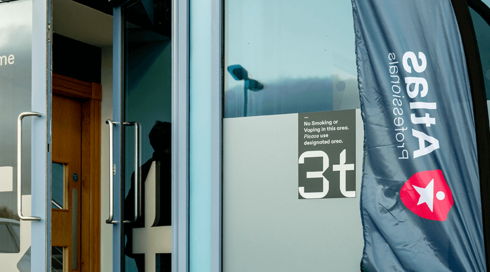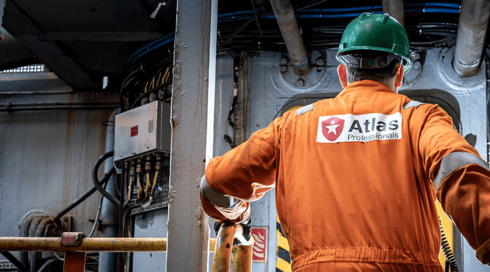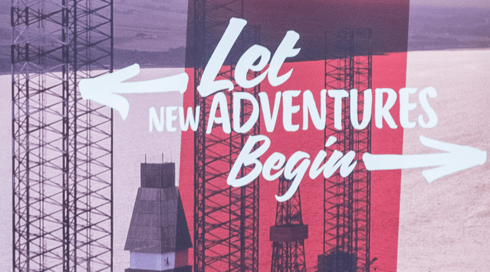5
How Greenhands Offshore Ensures Safety and Preparedness for Offshore Work
Introduction and Background
1. Can you introduce yourself and describe your role in the offshore industry?
I’m the Health and Safety Manager at Atlas Professionals, and I play a key role in supporting Greenhands Offshore. But before all that, I was in your shoes. Back in 2005, I was a Greenhand myself, trying to break into an industry that felt impossible to crack. Offshore work was a niche market, and like the old saying goes, “It’s not what you know, it’s who you know.”
I know firsthand how tough it is to get that first opportunity. I invested heavily in training and certifications, with no guarantees - just a lot of hope. Fortunately, a friend passed my CV to a local recruitment company, and within a month, I was offshore as a Greenhand Roustabout. But stories like mine were rare. It shouldn’t have to come down to luck.
That’s exactly why we built Greenhands Offshore at Atlas - to remove the guesswork and open doors for people who are ready to put in the effort. We knew there was a need, but the true scale of demand became clear when we posted a single LinkedIn job opportunity. Within 48 hours, we received 1,700 enquiries from all over the world. That’s when we knew we were onto something big.
The work is there. Our clients need skilled, qualified candidates who are prepared to step up. And now, thanks to Greenhands Offshore, we’re making that happen - connecting the right people with the right opportunities and building a stronger, safer, and more capable offshore workforce.
Evolution of Offshore Safety Training
2. How long have you been involved in offshore safety training, and what are some of the key changes you have seen over the years?
I’ve been involved in offshore training since the day I stepped onboard an oil rig for the first time. Within 24 hours, I was given online training modules to complete within three offshore trips. This training was my first step towards becoming a competent Roustabout.
For over 14 years, I have been managing, designing, and delivering offshore safety training. One key change I’ve observed is the increasing demand for competent personnel with transferable skills. It’s becoming harder to secure work in the energy sector for those without industry-recognised experience, making technical personnel highly sought after.
This is why we are now focusing on ex-military personnel. Their skill set aligns with what our clients require - discipline, adaptability, and a strong work ethic.
The energy sector urgently needs young professionals to pursue relevant trades. With an ageing workforce and a lost generation of tradespeople due to shifts towards industries like ICT, the demand for technical skills is set to increase significantly.
Safety Protocols and Training Modules
3. Can you provide an overview of the safety protocols and training modules included in Greenhands Offshore?
The interactive day includes training in:
• Drilling mastery class / process safety
• Life offshore
• Risk management tools
• Lock Out Tag Out
• Lifting operations and control of lifting equipment
• COSHH awareness
• Stop work authority
• In the line of fire (Red Zone awareness)
• Prevention of hand and finger injuries
• Prevention of dropped objects/Working at height
• Barrier management
• Where the Oil and Gas/Renewables sectors are currently at.
4. What specific safety skills and knowledge do participants gain from Greenhands Offshore training?
The core mission of Greenhands Offshore is to provide an unfiltered look into offshore life. By highlighting the risks of Major Accident Events (MAEs), we help participants develop a strong safety culture. Key areas covered include situational awareness, hazard mitigation, and company policies on safety procedures. Participants also learn how to use Stop Work Authority effectively.
5. How does the training simulate real-life scenarios to prepare participants for offshore hazards?
The safety training is based on real incidents and accidents I have personally investigated. We focus on identifying root causes, implementing corrective actions, and monitoring their effectiveness. This approach ensures trainees gain practical, experience-based knowledge.
Real-Life Impact
6. Can you share examples where safety training from Greenhands Offshore directly prevented accidents or improved emergency responses?
While we don’t always hear about the positive contributions of our Greenhands, one statistic stands out: since 2018, over 730 Greenhands have been mobilised, with only four involved in injury-related events. Two of these occurred after the individuals were classified as experienced.
Although four is still too many, we continuously learn from these incidents, implementing improvements to enhance safety standards.
7. How do participants typically respond to the safety training, and what feedback do you receive from them?
Feedback has been overwhelmingly positive. Participants appreciate learning from real-life incidents, as these case studies make the training more engaging and impactful. Feedback forms are reviewed regularly, allowing us to refine and improve the course as needed.
Importance of Safety in Offshore Work
8. Why is safety particularly critical in offshore work compared to other industries?
The remote nature of offshore work means that emergencies must be managed efficiently to prevent escalation. Many major offshore accidents could have been avoided with better awareness and preparedness.
9. What are some of the most common safety risks in the offshore industry, and how does Greenhands Offshore course address these risks?
The most frequent safety risks include:
• Hand and finger injuries
• Lack of situational awareness
• Slips, trips, and falls
• Dropped objects
• Failure to understand process safety and MAEs
Greenhands Offshore course directly addresses these risks by ensuring that all Greenhand Roustabouts complete IWCF Level 1 training. This course provides a strong foundation in well control, equipping participants with the knowledge to prevent well-related incidents.
The Role of Safety Experts
10. What role do safety experts play in developing and delivering Greenhands Offshore training?
As the lead safety expert, I believe safety training is the most crucial aspect of the Greenhands Offshore process. It’s not just about avoiding injuries - it’s about fostering the right mindset, behaviours, and attitudes towards safe work practices. Coaching and mentoring professionals from the outset is key to their success, as well as the success of our clients’ projects.
11. How do you stay updated with the latest safety regulations and technologies?
Continuous learning is essential. I stay informed by reading industry publications, attending HSE seminars, and engaging with health and safety leaders.
Looking to the Future
12. Is there anything else you’d like to add about Greenhands Offshore?
Greenhands Offshore is set to become the training programme of the future. It equips professionals with the skills and knowledge needed not only for oil and gas but also for renewables and rig decommissioning. One of our key clients, Well-Safe, focuses on rig decommissioning, and our training ensures participants are fully prepared for work in this area.
With 70,000 new candidates needed for roles in renewable energy in the UK alone by 2030, Greenhands Offshore initiative is more vital than ever.
.png)
.png)


